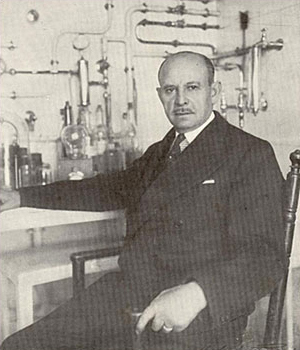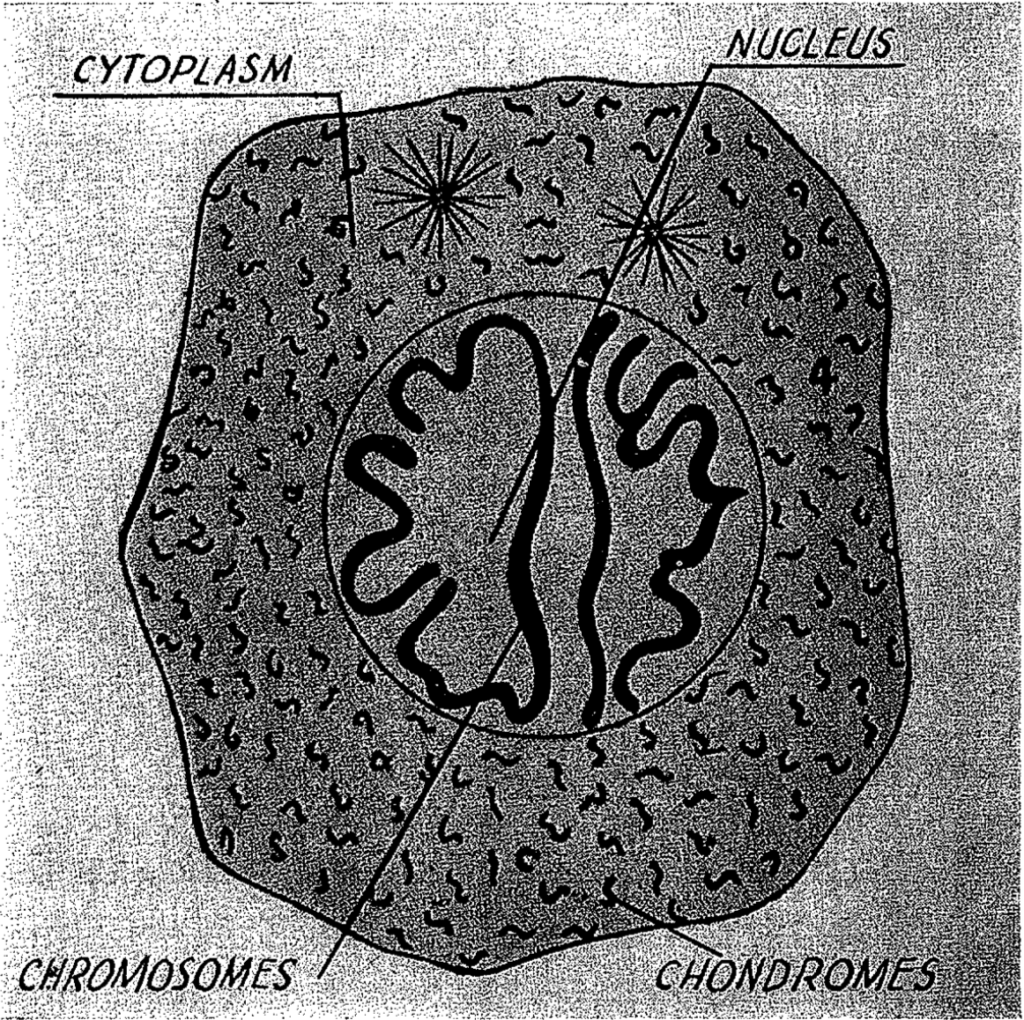
RADIATIONS AND WAVES SOURCES OF OUR LIFE
Before publishing the therapeutic results obtained with my multiple wave oscillator and presented at the International Con- gress of Short Waves in Vienna (July 1937), it may be useful to give a rapid survey of my theory of cellular oscillation which I have developed fully in a number of books.'”
All living cells are composed of two essential elements; the nucleus and the protoplasm in which it is bathed. This nucleus is itself composed of many tubular filaments: the chromosomes. In addition, hundreds of such smaller filaments or chondromes are present in the cytoplasm. (Fig. 1)

Chromosomes and chondromes are sheathed in an insula- ting substance (cholesterine, resin, fat, plastrin, etc.) and con- tain a liquid like serum with the same mineral content as sea water, and consequently a conductor of electricity. (Fig. 2) Thus, these filaments constitute ultramicroscopic oscillating circuits capable of oscillating electrically over a wide scale of very short wave lengths.
I have demonstrated in my works that these cellular oscil- lating circuits, chromosomes and chondromes, vibrate electrically under the stimulus of electromagnetic waves: cosmic, atmos- pheric and telluric.
Now, many internal and external influences may upset the oscillating equilibrium of these cells. For instance, a variation or change in the field of cosmic, telluric or atmospheric waves, a demineralization of the organic matter constituting the cellular substance, traumas causing the desh’uction by shock of the protoplasm or the nucleus.
Under these varied circumstances cellular oscillation may cease: the cell is then dead. But within the dead cell, the chon- dromes sometimes continue to oscillate elech’ically on their own natural frequencies. Fortunately, this phenomenon occurs rarely. or all mankind would already have perished of cancer.
The chondromes then envelope themselves in a membrane and continue to oscillate and multiply independently of the cell.
They may then become neoplasic cells. (Fig. 3)
In 1923 I first conceived the notion of creating an elech”o- magnetic field producing a sustained very short modulated wave on a single frequency maintained between 2 and 10 meter wave lengths.
With this short wave apparatus I was able to cure plants in- cculated with cancer. For six years at the Salpetrif?~re I observed and checked the effects of these short waves.
Using very low power, from 10 to 12 watts, and a limited
duration of treatment, I succeeded in curing cancer in human beings, but also had to record some failures.
The success of my experiments became widespread. In many countries, as early as 1928, they began to build short wave oscil- lators of considerable power producing thermal effects.
But there was great danger that the chromosomes and chon- dromes, which are barely a ten thousandth or twenty thousandth of a millimeter in thickness, might not survive under a high fre- quency current. They offer much resistance, even to a low cur- rent which is sufficient to dissolve and destroy them.
It is simple to prove this by bringing a small bulb of from 2 to 5 volts with a filament of several hundredths of a millimeter, inserted b~tween metal rods forming antennre, within the radius cf a short wave transmitter. The bulb will light up and sometimes burn out, if it is brought too near the apparatus.
Moreover, the chondromes and chromosomes of all living cells, which are infinitely finer than the filaments in the bulbs, are sensitive centers of thermal phenomena, which may pro- voke their fusion. Undoubtedly this method is effective in killing microbes in the organism and in neoplasic cells. But it can also destroy millions of cells of healthy tissue in every irradiation.
That is why, in 1929, I gave up using my short waves with thermal effects emitted on a single wave length.
. On the other hand, I thought it possible to obtain better results by administering an oscillatory shock to all the cells in the organism simultaneously. Such a shock, very brief, produced by damped or weakened electrostatic waves, does not provoke thermal and prolonged effects and involves no risk of burning living cells.
I therefore sought to produce an artificial oscillatory shock causing aperiodic oscillation of the weak or dead cells.
At first glance this problem seems physically insoluble as there are approximately 200 quintillion cells in our bodies, each oscillating on its own natural wave length. Theoretically, there- fore, we would have to have a different wave length for each cell, so that every cell in the organism could oscillate in resonance on its own wave length.
After much research I was able to construct an apparatus creating an electrostatic field covering all frequencies from 3 meters to the infra-red, so that every cell can find its natural fre- quency and vibrate in resonance.
We know that in physics, a circuit fed by damped or weak- ened high frequency currents creates many harmonics. Conse- quently I conceived an oscillator of multiple wave lengths with a broad scale in which every organ, every gland, every tissue, every nerve, could find its natural frequency. (Fig. 4)
To obtain this result I set up a transmitter composed of a series of circular concentric oscillating circuits linked by a silk cord but not contiguous, as shown in Fig. 4.
Thus, I built an oscillator with all the basic wave lengths from 10 centimeters to 400 meters, that is, all frequencies from 750,000 per second to 3 billion. But each circuit also emits many harmonics, which, with their basic waves, their interferences and their effluvia can reach the scale of the infra-red and even that of visible light (1 to 300 trillion vibrations per second).
Since all the cells as well as the chondromes oscillate pre- cisely at frequencies on those gamuts, they can therefore find on the scale of such an oscillator, the frequencies which cause them to vibrate in resonance.